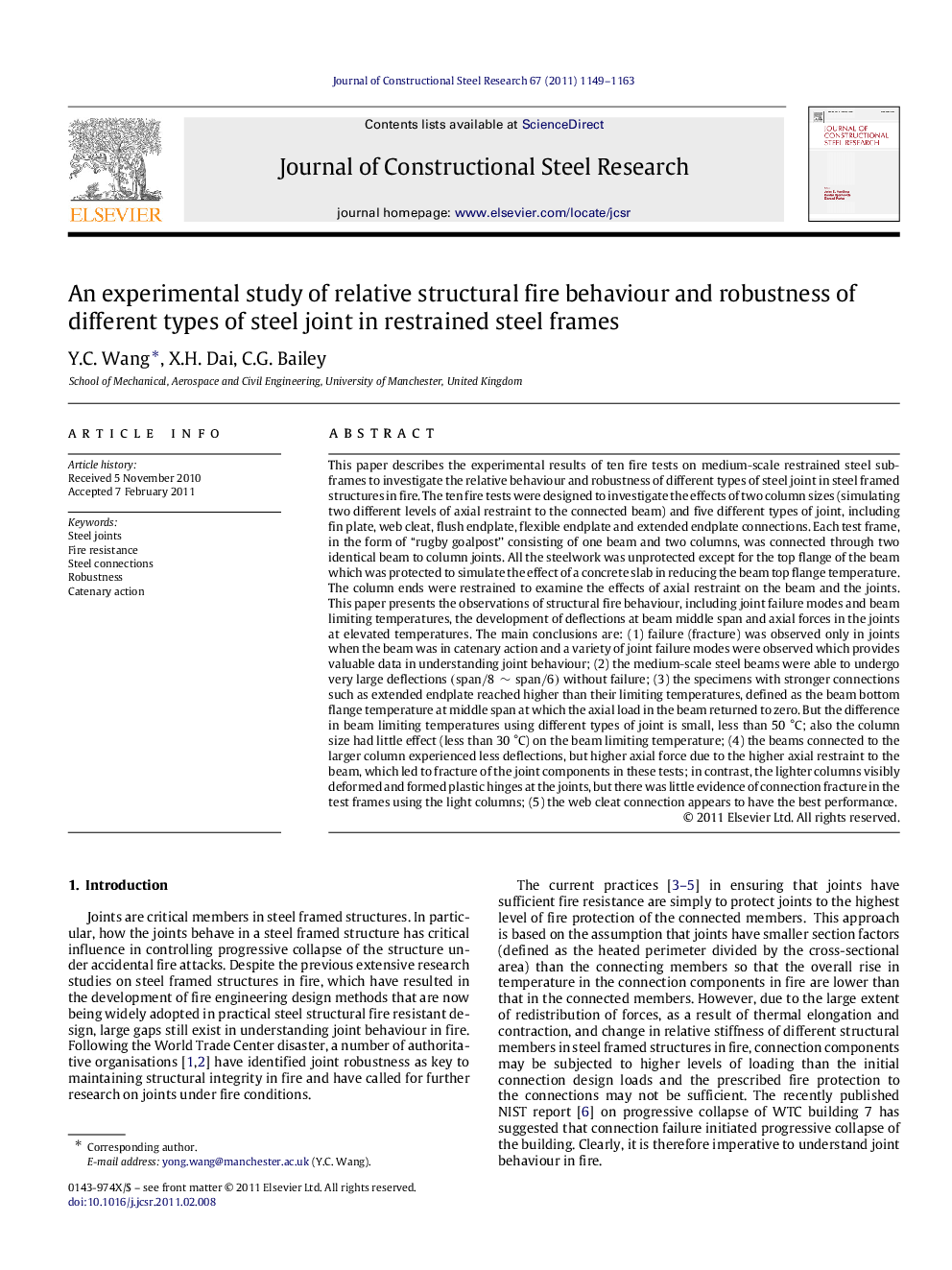| کد مقاله | کد نشریه | سال انتشار | مقاله انگلیسی | نسخه تمام متن |
|---|---|---|---|---|
| 285436 | 509196 | 2011 | 15 صفحه PDF | دانلود رایگان |

This paper describes the experimental results of ten fire tests on medium-scale restrained steel sub-frames to investigate the relative behaviour and robustness of different types of steel joint in steel framed structures in fire. The ten fire tests were designed to investigate the effects of two column sizes (simulating two different levels of axial restraint to the connected beam) and five different types of joint, including fin plate, web cleat, flush endplate, flexible endplate and extended endplate connections. Each test frame, in the form of “rugby goalpost” consisting of one beam and two columns, was connected through two identical beam to column joints. All the steelwork was unprotected except for the top flange of the beam which was protected to simulate the effect of a concrete slab in reducing the beam top flange temperature. The column ends were restrained to examine the effects of axial restraint on the beam and the joints. This paper presents the observations of structural fire behaviour, including joint failure modes and beam limiting temperatures, the development of deflections at beam middle span and axial forces in the joints at elevated temperatures. The main conclusions are: (1) failure (fracture) was observed only in joints when the beam was in catenary action and a variety of joint failure modes were observed which provides valuable data in understanding joint behaviour; (2) the medium-scale steel beams were able to undergo very large deflections (span/8∼span/6) without failure; (3) the specimens with stronger connections such as extended endplate reached higher than their limiting temperatures, defined as the beam bottom flange temperature at middle span at which the axial load in the beam returned to zero. But the difference in beam limiting temperatures using different types of joint is small, less than 50 °C; also the column size had little effect (less than 30 °C) on the beam limiting temperature; (4) the beams connected to the larger column experienced less deflections, but higher axial force due to the higher axial restraint to the beam, which led to fracture of the joint components in these tests; in contrast, the lighter columns visibly deformed and formed plastic hinges at the joints, but there was little evidence of connection fracture in the test frames using the light columns; (5) the web cleat connection appears to have the best performance.
Research highlights
► Fire tests on interaction between steel joints and structural members in restrained structural assembly.
► Revealed fracture modes of different types of joints and their components.
► Provided experimental confirmation of ductile behaviour of steel beams in fire.
► Provided experimental information on development of catenary action in restrained steel beams in fire.
Journal: Journal of Constructional Steel Research - Volume 67, Issue 7, July 2011, Pages 1149–1163